The East Berlin and the Berlin Wall 2-Hour Walking Tour takes visitors on an immersive journey through the city’s Cold War past. Guided by knowledgeable experts, the tour explores key historical sites, including a preserved section of the iconic Berlin Wall and the former Stasi headquarters. Participants gain a deeper understanding of the division that once split the city and the events that led to the Wall’s eventual fall, marking a pivotal moment in the collapse of communism in Eastern Europe. With a focus on providing an informative and objective experience, the tour promises to shed light on a critical period in Germany’s history.
Key Points
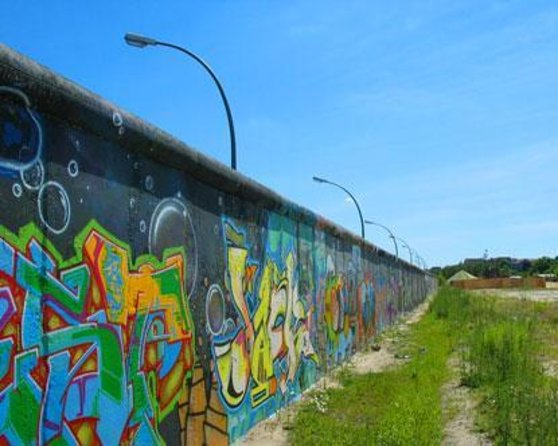
- Guided 2-hour walking tour exploring East Berlin’s Cold War history and Soviet rule, including key sites like the Berlin Wall memorial and former Stasi headquarters.
- Opportunity to see a preserved section of the Berlin Wall and the ‘Death Strip’, providing a powerful reminder of the city’s division.
- Learn about the fall of the Berlin Wall in 1989, which marked the collapse of communism in Eastern Europe and paved the way for German reunification.
- Gain insight into the East German secret police, the Stasi, and how they maintained control over citizens through extensive surveillance and oppression tactics.
- Discover the iconic Alexanderplatz and the towering East German TV tower, which were central to the former communist government’s presence in the city.
Overview of the Tour
This 2-hour guided walking tour offers an in-depth exploration of East Berlin’s Cold War history and the city under Soviet rule.
Travelers will visit key sites that tell the story of this pivotal era, including the Berlin Wall memorial, the Bornholmer Strasse border crossing where the Wall fell in 1989, and the former headquarters of the East German secret police, the Stasi.
Along the way, the knowledgeable guide will provide fascinating insights and historical context.
The tour culminates at Alexanderplatz, home to the iconic East German TV tower.
With a Berlin city map and transportation information included, this experience gives visitors a comprehensive look at life in former East Berlin.
If you're enjoying exploring Berlin on foot, you'll love these other walking tours we recommend
Exploring Cold War History
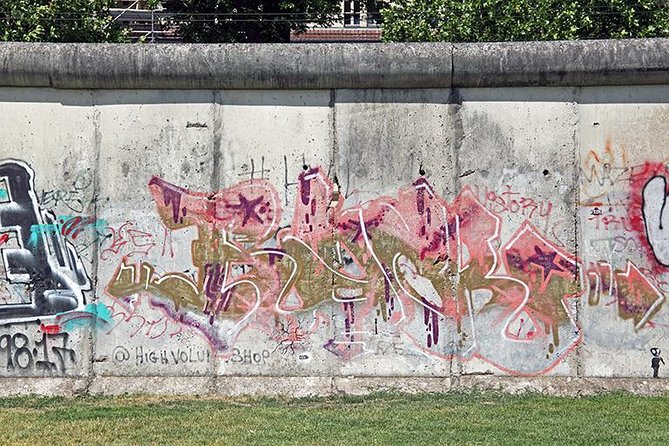
During the tour, visitors explore the complex history of East Berlin under Soviet occupation, exploring the remnants of the infamous Berlin Wall and uncovering the secretive operations of the East German Stasi police. The guide brings this turbulent era to life as they:
- Examine a preserved section of the Berlin Wall and the ‘Death Strip’ that claimed many lives
- Hear the story of how the Wall’s fall began at the Bornholmer Strasse crossing
Step inside the former headquarters of the Stasi, the feared East German secret police.
Stand in Alexanderplatz, the symbolic center of East Berlin’s communist government.
Gain a deeper understanding of how the divided city embodied the larger Cold War tensions.
Preserved Berlin Wall Section
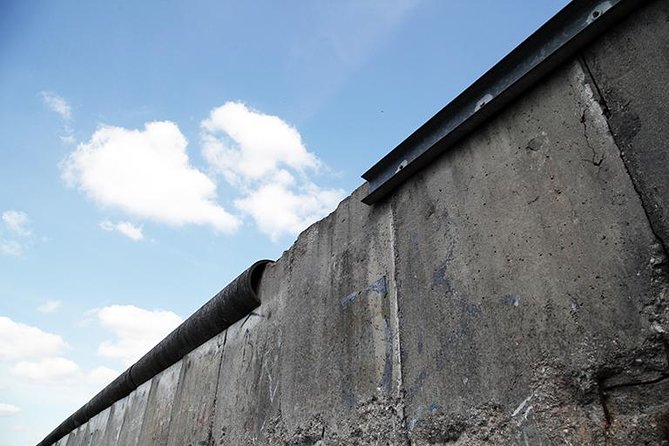
A preserved section of the Berlin Wall stands as a powerful reminder of the barriers that once divided the city. Visitors can see the towering concrete slabs and the ominous ‘Death Strip’ that separated East and West Berlin, a haunting testament to the human cost of the Cold War. This preserved section offers a visceral glimpse into the past, allowing visitors to physically experience the divide that once existed. The Wall’s stark appearance and the somber atmosphere of the memorial site evoke a sense of reflection on the historical significance and the human impact of this symbol of oppression.
| Section | Height | Length | Guarded |
|---|---|---|---|
| Berlin Wall | 3.6 meters | 45 meters | Yes |
| Death Strip | 5 meters | N/A | Yes |
| Watchtower | 3.6 meters | N/A | Yes |
| Barbed Wire | 0.3 meters | N/A | Yes |
Fall of the Berlin Wall
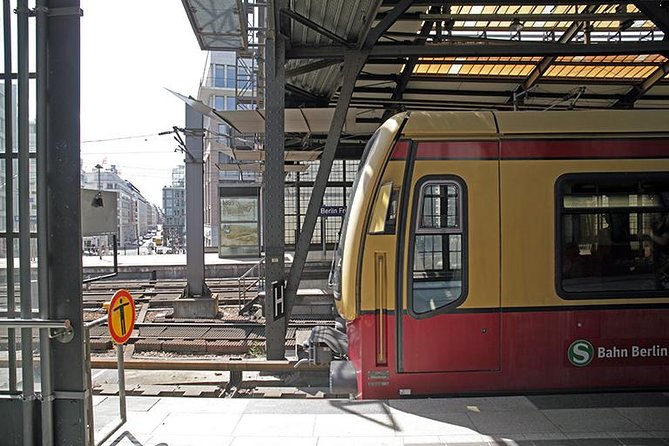
The fall of the Berlin Wall in 1989 marked a pivotal moment in the collapse of communism across Eastern Europe. On the evening of November 9th, East German authorities unexpectedly opened the checkpoints, allowing thousands of East Berliners to freely cross into West Berlin for the first time in 28 years. Amid the joyous celebrations, people began chipping away at the Wall, symbolically tearing down the physical and ideological divisions that had separated the city since its construction in 1961.
The fall of the Wall marked the end of East Germany’s communist regime.
It paved the way for German reunification in 1990.
The event was a symbolic victory for democracy and human rights.
It inspired pro-democracy movements across the Eastern Bloc.
The fall of the Wall became an iconic moment in world history.
Stasi Headquarters and Control
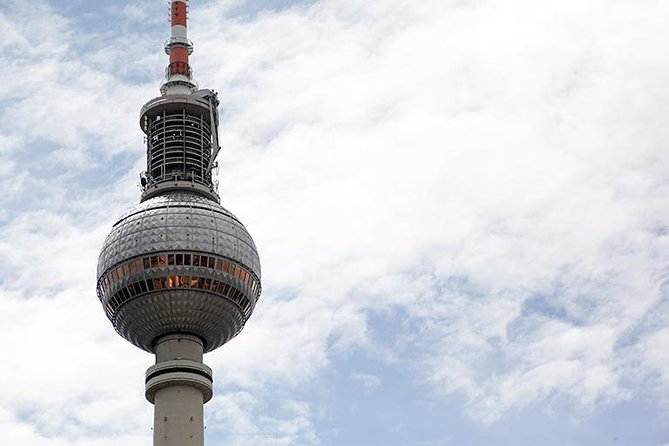
The East German secret police, known as the Stasi, maintained tight control over the citizens of East Berlin through their sprawling headquarters.
Visitors to the former Stasi complex gain insight into the extensive surveillance and oppression tactics used by the agency. The guide will point out the observation towers, interrogation rooms, and vast archive of files documenting the lives of East German citizens.
Attendees learn how the Stasi infiltrated every aspect of society, spying on neighbors, coworkers, and even family members. The tour highlights how the Stasi’s intrusive practices stripped away individual freedoms and autonomy, instilling a climate of fear and mistrust that endured until the fall of the Berlin Wall.
Here are more great tours and experiences we've reviewed in Berlin
Iconic Alexanderplatz and TV Tower
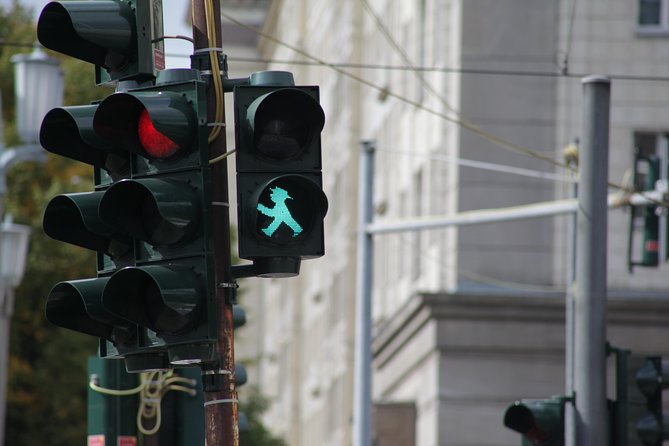
Towering above Alexanderplatz, the iconic TV tower dominates the former East German capital‘s skyline, serving as a lasting symbol of communist rule. Completed in 1969, the 1,200-foot structure was the tallest building in East Germany and visible for miles.
As your guide leads you through Alexanderplatz, they’ll share insights about the tower’s original purpose as a symbol of East Germany’s technological prowess and how the tower’s distinctive shape and reflective facade were designed to dazzle visitors.
The observation deck and revolving restaurant at the top offer panoramic views.
The nearby Palace of the Republic, the former headquarters of East Germany’s parliament, is also discussed.
Plus, your guide will explain how Alexanderplatz was transformed under Soviet occupation into a grand public square.
Meeting Details and Logistics
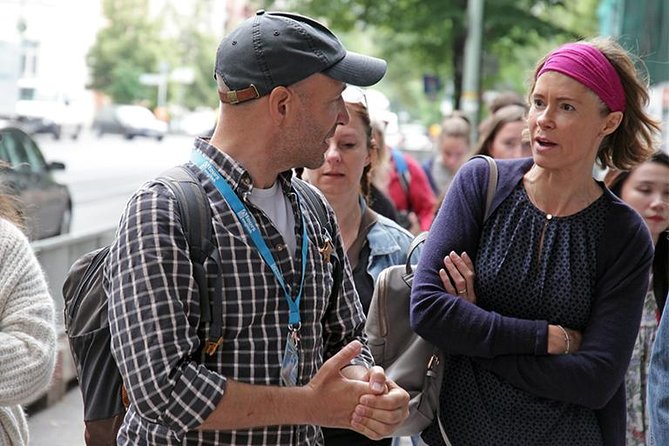
Typically, the tour meets in front of the Starbucks across from the S-Bahn Hackescher Markt station at 10:00 AM.
It then ends close to the S-Bahn station Nordbahnhof after the 2-hour walking exploration of East Berlin’s Cold War history and landmarks.
The tour is led by a professional guide and includes a Berlin city map with museum recommendations and public transportation information.
Guests are advised to dress appropriately as the tour operates in all weather conditions.
The tour isn’t wheelchair accessible, but service animals are allowed.
The maximum group size is 20 travelers, and a 24-hour cancellation policy applies for a full refund.
Cancellation Policy and Additional Info
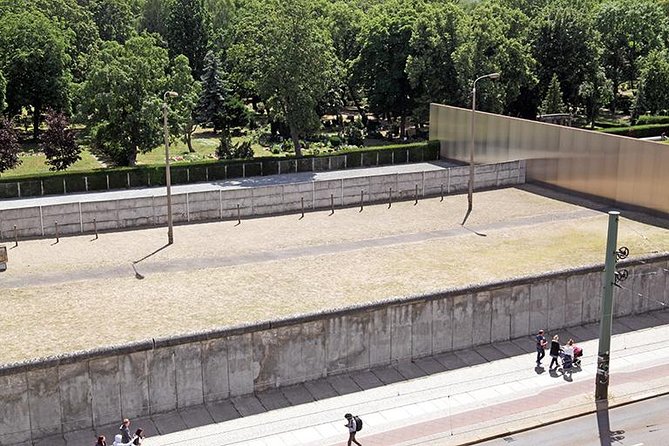
Guests can receive a full refund with a 24-hour cancellation notice. The tour operates in all weather conditions, so participants should dress appropriately. Although not wheelchair accessible, service animals are permitted on the tour. Groups are limited to a maximum of 20 travelers.
The tour takes place rain or shine, so be prepared for the weather.
While the tour isn’t wheelchair accessible, guests with service animals are welcome.
To ensure an intimate experience, group sizes are capped at 20 people.
Guests should arrive at the meeting point, located across from the S-Bahn Hackescher Markt station, by 10:00 AM.
The tour concludes near the Nordbahnhof S-Bahn station.
Frequently Asked Questions
Can I Take Photos During the Tour?
Yes, guests can take photos during the tour. The tour operates in all weather conditions, so guests should dress appropriately. However, the tour is not wheelchair accessible, though service animals are allowed.
Is There Any Food or Restroom Break Included?
No, this 2-hour walking tour does not include any food or restroom breaks. The focus is on exploring East Berlin’s Cold War history, with the guide leading participants through key sites without scheduled stops for refreshments or facilities.
Do We Get to Enter the Stasi Headquarters?
No, the tour does not include entry into the Stasi headquarters. The tour provides an exterior view of the former Stasi headquarters and visitors can learn about the East German secret police’s control over citizens from the outside.
How Much Walking Is Involved During the Tour?
The tour involves a significant amount of walking, covering approximately 2 miles or 3 kilometers over the 2-hour duration. Guests should be prepared for an active walking experience to fully explore the historical sites.
Is There an Option for a Private Tour?
Yes, there is an option for a private tour. Many tour providers offer customized private tours for individuals or small groups, allowing for a more personalized experience tailored to your’ interests and preferences.
Recap
The East Berlin and the Berlin Wall 2-Hour Walking Tour offers a captivating journey through the city’s Cold War history.
Visitors can explore preserved remnants of the Berlin Wall, the Bornholmer Strasse border crossing, the former Stasi headquarters, and Alexanderplatz’s iconic TV tower, gaining a deeper understanding of the division and eventual collapse of communism in Eastern Europe.
More Walking Tours in Berlin
- Berlin: History of the Third Reich Guided Walking Tour
- East Berlin and the Wall: Walking Tour
- Karl-Marx-Allee Walking Tour: Berlins Socialist History
- Berlin Friedrichshain: Urban Walk of Grit and Gentrification
- RedTown Hall Christmas Market & City Highlights Walking Tour
- Berlin: Jewish Heritage Walking Tour
More Tours in Berlin
- Berlin: 2-Hour Premium Segway Tour
- Berlin: Hidden gems around the Gendarmenmarkt – Guided walking tour
- Berlin: Guided group tour of Kreuzberg 36, the alternative district
- Tour in Berlin from Warnemünde and Rostock Cruise Port
- Berlin: Guided Street Food Tour with Tastings
- Potsdam: Original steam ship Gustav from 1908. Coal-fired, boat tour
More Tour Reviews in Berlin
Not for you? Here's more things to do in Berlin we have recnetly reviewed
- Potsdam: 5-Hour-Tour “Parks & Palaces” from Berlin by VW-Bus
- Berlin: guided canoe | kayaktour
- Berlin: 3-Hour Guided Small Group Fat Tire E-Scooter Tour
- Rickshaw private driver, shared Guide Berlin Highlights
- Berlin: Madame Tussauds Happy Hour Ticket
- Berlin: Green City Guided Bike Tour
- VIP Warnemünde-Berlin: Private Shore Excursion with a Van
- Understanding Kreuzberg: The roots of local (sub)culture
- Tranfer with small or Bigger introduction Tour Berlin
- Private Tour – Highlights of Berlin for Families
- Berlin: Germany’s Very first Craft Beer Tour and Experience
- Private Highlights of Berlin Bike Tour
